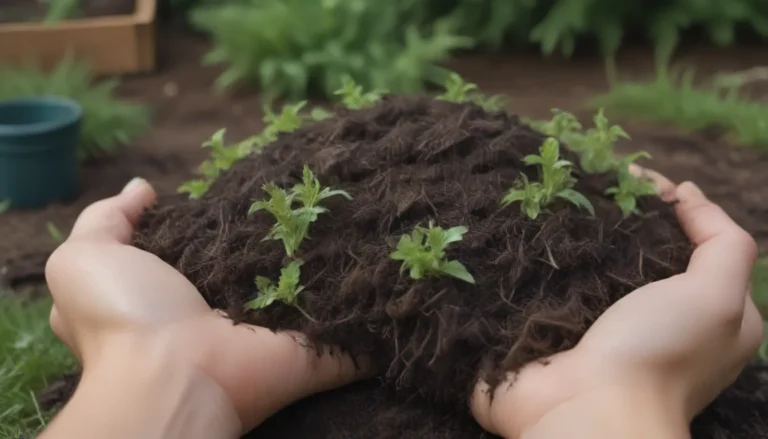The Ultimate Guide to Growing and Caring for Coast Leucothoe

Coast leucothoe, also known as dog hobble, is a stunning plant that offers four-season interest in your garden. From its vibrant green leaves in the spring to its white flowers tinged with pink in the late spring and early summer, followed by deep bronze and purple leaves in the autumn, coast leucothoe is a versatile and attractive addition to any landscape. This evergreen shrub can grow up to 4 feet tall and 6 feet wide, with a moderate growth rate of 6 inches to 1 foot per year. In this comprehensive guide, we will explore everything you need to know to successfully grow and care for coast leucothoe in your garden.
Coast Leucothoe Care
Here are the main care requirements for growing a healthy and vibrant coast leucothoe plant:
Light
While coast leucothoe can tolerate full sun, it prefers partial shade to thrive. Exposure to full sun and hot temperatures can result in dried out leaves and flowers. If you choose a partial sun location, morning sun is preferable to afternoon sun to provide the ideal growing conditions for your coast leucothoe.
Soil
Coast leucothoe thrives in humus-rich, loamy, organic, lime-free soil that is slightly acidic. However, it can adapt to a wide range of soil types, from neutral to reasonably acidic. Good drainage is essential for the plant’s health. Improve moisture retention and drainage by adding materials such as peat moss, coffee grounds, composted manure, and a bit of sand to the soil.
Water
Regular watering is crucial for coast leucothoe, especially during dry periods as it is not drought-resistant. During the plant’s blooming season, water deeply at the base to ensure the flowers receive enough moisture to flourish.
Temperature and Humidity
Coast leucothoe does not thrive in extreme temperatures, whether hot or cold. It may wilt or dry out in hot afternoon sun. Provide ample water and consider misting the leaves on hot days to keep them moist and healthy.
Fertilizer
Apply a complete fertilizer in early spring before the new growth begins. Avoid fertilizing the plant after midsummer, as this can stimulate new growth that is susceptible to winter damage. If your soil is alkaline, consider using a fertilizer for acid-loving plants, making sure to check the soil pH before application.
Types of Coast Leucothoe
Coast leucothoe belongs to the Ericaceae family, along with other acid-loving plants like blueberries, cranberries, and rhododendrons. Some popular varieties of coast leucothoe include:
- Leucothoe axillaris ‘ReJoyce’
- Leucothoe axillaris ‘Curly Red’
- Leucothoe fontanesiana ‘Rainbow’
- Leucothoe fontanesiana ‘Zeblid’
Pruning
Regular pruning is necessary for coast leucothoe and should be done in the spring after the plant has finished blooming. Trim and thin out any broken or errant branches, avoiding shearing to maintain the plant’s natural arching habit.
Propagating Coast Leucothoe
Coast leucothoe can be propagated from cuttings taken in early summer, making it an excellent option for expanding your plant collection through propagation.
How to Grow Coast Leucothoe From Seed
While most coast leucothoe plants are cultivars, you can try growing them from seeds obtained from a seed company. However, for true-to-type plants, propagation from stem cuttings is recommended for the best results.
Potting and Repotting Coast Leucothoe
Coast leucothoe is well-suited for container planting. Choose a lightweight potting mix and a container with proper drainage to ensure the plant’s health. When the plant outgrows its pot, transplant it into a larger container in the spring, using fresh potting soil for optimal growth.
Overwintering
Protect your coast leucothoe from extreme cold and winter winds by planting it near a structure or larger shrubs. Apply a thick layer of mulch around the base to insulate the roots during the winter months.
Common Pests and Plant Diseases
While coast leucothoe is relatively resilient to pests and diseases, inadequate soil drainage can lead to root rot, manifesting as stunted growth and yellowing leaves. Watch out for leaf spot, which can occur in cool, wet conditions and may cause stem girdling if left untreated.
How to Get Coast Leucothoe to Bloom
Encourage blooming in your coast leucothoe by providing the ideal growing conditions and avoiding harsh weather that can dry out the flowers. Here are some tips to help your coast leucothoe bloom successfully:
- In case of failure to bloom, assess sunlight exposure and ensure the plant receives adequate water.
- Coast leucothoe typically blooms from April to May, producing small creamy white flowers with a light honey-like scent.
- To encourage more blooms, consider fertilizing the plant at the beginning of each growing season and avoid fertilizing after midsummer.
Common Problems with Coast Leucothoe
Coast leucothoe is a hardy plant native to North America, with few common problems when grown within its natural climate range. However, keep an eye out for the following issues:
- Wilting: Underwatering can cause coast leucothoe to wilt. Provide regular watering, especially during hot weather, to revive the plant.
- Yellowing Leaves: Overwatering can lead to yellowing leaves and nutrient deficiencies. Ensure proper drainage and avoid waterlogged soil to maintain the plant’s health.
In conclusion, coast leucothoe is a versatile and visually appealing plant that can thrive in various garden settings. By following the care tips outlined in this guide, you can successfully grow and care for coast leucothoe in your garden, enjoying its four-season interest and beautiful blooms throughout the year. Happy gardening!





